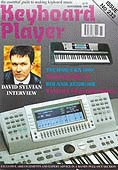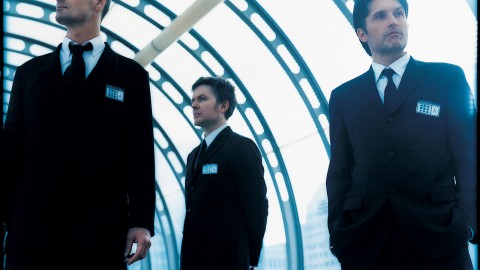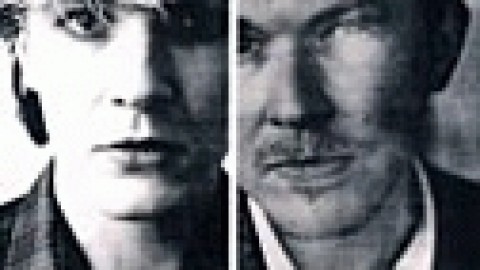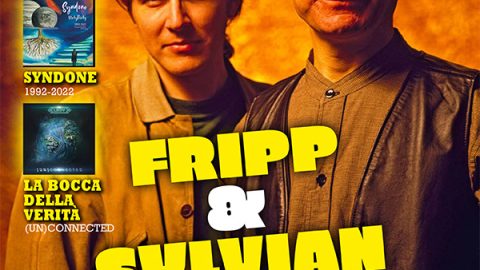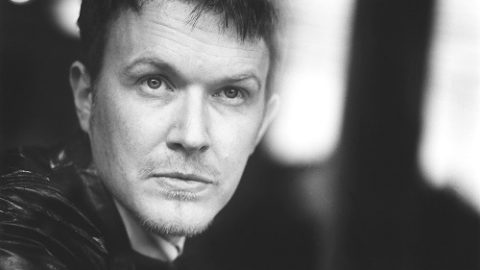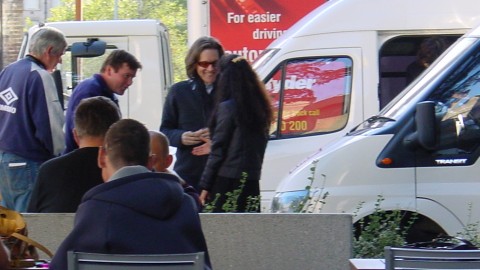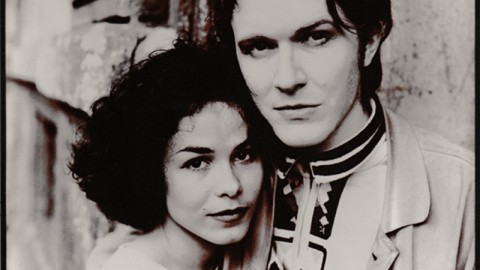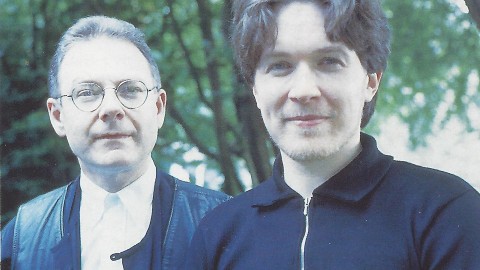Keyboard Player November 1999
David Sylvian tells Mark Prendergast about the spiritual as well as musical journey that culminated in his first solo album for over a decade
It was difficult to notice, but sometime in the late 1980s David Sylvian stopped making solo recordings. Secrets Of The Beehive was his last ‘cultured’ document in 1987 and featured Ryuichi Sakamoto on tasteful keyboards and arrangements. From there he explored various avenues of collaboration, notably with Holger Czukay and Robert Fripp. During a press conversation with me in 1993 Fripp revealed that Sylvian was always tinkering around with keyboards and computers. That year I witnessed Sylvian at the Royal Albert Hall sitting behind a grand piano and singing wonderful new ballads.
In conversation in 1994 he intimated about a new album and spoke about “change not being an end in itself.” He was then married to American singer/poet Ingrid Chavez, had become a father to their first daughter Ameera-Daya and was living in Minneapolis, The long winters afforded him the opportunity to write a lot of songs and at the beginning of 1996 he began recording a new solo album in New York with Ryuichi Sakamoto, Three years later Dead Bees On A Cake is not only Sylvian’s most accomplished album to date, but one of the best modern examples of the Fender Rhodes electric piano.
Sylvian (now 41) warms to the topic of vintage keyboards. “When I first started making records back in the late 1970s it appeared that just about every studio supplied a Fender Rhodes and a Hammond organ along with the obligatory acoustic piano. Over familiarity with these instruments bred contempt so I consciously stayed clear of them. Throughtout the ’80s and ’90s little was heard from them except lame imitations from synth modules. Then I bought a Rhodes and the appeal of its distinctive sound grew on me over the years. In fact it featured on many of my favourite recording of the late 1960s, like those of Miles Davis. I began using it as a writing tool so it naturally became part of the finished work.”
Dead Bees On A Cake is incredibly accomplished and covers an enormous canvas of music. It begins with the trip hop jazz of / Surrender and concludes with the ethnic ambience of Darkest Dreaming. In between we get Appalchian folk guitar, slow blues, succulent ballad, Indian music, soundtrack impressions, chamber music, progressive rock, space jazz, cool jazz and devotional Indian singing!
Throughout the spatialisation of the music is full Cinemascope, Sakamoto handling keyboards and string arrangements, Marc Ribot (of Tom Waits fame) playing resonating guitar chords, Steve Jansen (Sylvian’s brother) on percussion, Talvin Sigh on tabla, Ingrid Chavez adding warm vocal accompaniment while Sylvian took care of programming, samples, other guitars, keyboards and of course lyrics/ singing. A plethora of other musicians also made contributions.
Though Sylvian loves keyboards he thinks he’s a more proficient guitarist. “I tend to build up layers of guitar in an attempt to add emotional destiny/intensity to a track as witnessed on Darkest Dreaming and Praise”.
True, this layered ambience can lead to incredible results as on the pure trance-hypnosis of Mutability from a 1989 collaboration with Can’s Holger Czukay. But to my mind Dead Bees goes further, the bright lustre of the Fender Rhodes being augmented by some brilliant mixing, cue the way segments of the strings rise up at you in / Surrender. Overall, Sylvian’s placing of the sound mosaics gives Dead Bees a rich texture improved by judicious use of samples.
John McLaughlin’s Mahavishnu Orchestra, John Lee Hooker, John Cage and Armenian duduk (flute) player Djivan Gasparyan are sampled, Sylvian crediting all as if they were real players on the album.
“Sometimes a sample loop can become something of a catalyst in that it may lead you down a path you might not otherwise have taken. The Mavishnu loop came from Inner Mounting Flame and formed the basic drum pattern for I Surrender as did the John Lee Hooker loop (I’m Wanderin) for Midnight Sun. The Cage prepared piano sample formed part of the initial soundscape that was to become Pollen Park. The Gasparyn sample was added to Darkest Dreaming after the composition was completed adding tonal contrast and melody”.
Sylvian used a Pro Tools core system (48-Tracks running on Macintosh) to record the album. All mixing was done internally on the computer with groups being brought up on the Soundcraft console where additional treatments were made.
He confesses to still occasionally using the Prophet Five synthesiser (the instrument he made famous with his band Japan) while Nord Lead and Roland synth modules were also in evidence. The album- “involved a fair amount of equalisation, quite radical EQ in some instances while outboard effects were kept down to a minimum” with use of only a few modules including his favourite Eventide Harmonizers.
The gestation of the album was long and difficult, Sylvian going into considerable debt and close to abandoning the project several times. Even his sketch of the studio sessions reveals an intense devotion to the work.
“I did a fare amount of preparatory work (as early as1993) at my own Atma sound studio in Minneapolis before moving onto New York in January ’96 where for three weeks we recorded in the basement of Ryuichi’s home with him on the Fender Rhodes. We did a week of sessions at Right Track studios with Marc Ribot and an orchestra before I returned to Minneapolis to edit, sample and overdub the results. The next sessions took place at Real World in Bath with people like Talvin Singh and the flugelhorn player Kenny Wheeler.”
“Back at Atma Sound I reworked the material for months at a time. I did occasional sessions in and around Minneapolis. I even went to Seattle where I recorded for two days with guitarist Bill Frisell. In 1997 1 moved to California with Ingrid and family, setting up camp in a small wood cabin in the Napa hills near San Francisco. There I finished up the overdubs and worked on the vocals. We mixed at my engineer Dave Kent’s studio, Synergy, located in Napa. The album was completed late Summer 1998.”
For Sylvian, making music has always been a spiritual journey. Dead Bees On A Cake is adrift through with Zen, Hinduism and a universal optimism in the simplicity of living. Sylvian sees the building of songs “…as a matter of working until they mirror back to me the initial impetus, emotional density and complexity, for their creation”.
At the beginning of this piece I noted that Sylvian, from 1987 onwards, was more interested in collaborative work than in his own music. In truth he found himself in a personal crisis.
Yes, the crisis began to gather momentum prior to undertaking a 1988 tour. That took its toll and I found myself in a frighteningly unstable state which I would experience in varying degrees of intensity over the next three or four years. I was unable to work in isolation but at the same time felt the need to throw myself into collaborative project after project in a hope of recognising via my response something of what I was dealing with. At these times the manifestations of the crisis were less apparent. I entered analysis which I found to be enormously helpful on a number of levels.
“I begun to see light at the end of the tunnel around the time I started talking with Robert Fripp regarding our collaboration. However, I’m entirely uncertain I’d have made it through without Ingrid entering into my life”.
Ingrid Chavez, star of Prince’s Graffiti Bridge, author of a Madonna hit, Puerto Rican Beauty, poet and narrative musician – met Sylvian in New York in late 1991 ~ A romance blossomed, they married in 1992, toured Italy and moved to Minneapolis. Dead Bees On A Cake is dedicated to her and her sensuous voice slips in and out of many mixes. States Sylvian: “We’ve affected enormous changes in one another’s lives. We act as a grounding for one another, a provocation, a reminder.” In 1997 Chavez bore Sylvian a second daughter, Isobel Ananda.
Another grounding is their shared interest in Hinduism. Daily chanting/meditation sessions are now the norm for Sylvian and Chavez; Dead Bees even features the beautiful devotional singing of Shree Maa, a living Indian saint they encountered on their many journeys across America.
I remember Sylvian in makeup, interviewed in Blitz magazine during the early 1980s, talking about his dabblings in drugs and bisexuality. Things are very different today. “Over the years I’ve renounced a variety of habits, making numerous lifestyle choices. I became a vegetarian in 1984. 1 haven’t had contact with drugs since 1986. 1 even gave up smoking in 1991, drinking in 1995. All dependencies can be viewed as undesirable and I do my best to stay clear of them.”
It may seem strange that such a sensitive and inwardly voyaging Englishman should settle for a life in the gaudy States. Some might say that it’s a perfect place for an old New Romantic, all glitter and surface. Yet Sylvian makes even the panoramic breadth of America seem deeply personal.
“it took me about a year to settle, to embrace life in the States. I’d never considered it as a possible home prior to meeting Ingrid. After the overload of life in London I considered the move to Minneapolis something of a necessary retreat. I was distancing myself culturally, purifying the system. Considering the ethnic makeup of the country there’s surprisingly little diversity in American culture with the notable exception of a few major cities.
“I appreciate the level of optimism here: the willingness to give something a try, jump in at the deep end. The American character is still in a state of flux hence its immaturity, idealism and bravado. It’s possible to put down roots here but it is also possible to lead a rather transient existence”.
“I have travelled the length and breadth of the country a number of times now. Here the focus has become Ingrid, the growing family and our spiritual pursuits. My children unlock my heart, give me perspective and show me where there’s ample room for improvement and development in my life”.

